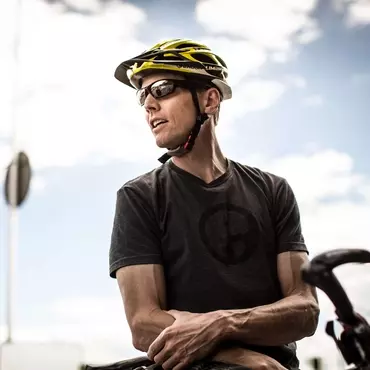By David Wiens, Executive Director of the International Mountain Bicycling Association
Every day at IMBA, we’re hearing from a land manager, an IMBA Local partner, a local trail champion, or a recreation professional about e-MTBs. From questions about the class system, to identification, management, enforcement, speed, trail etiquette — while mountain bike trails and riding styles vary widely, we’re observing a common set of challenges with e-MTBs.
The three-class e-bike system our industry all knows well — Class 1, Class 2, Class 3 — was developed as e-bikes were gaining popularity, but before e-MTBs had much traction. Today, e-MTBs are a big deal. The industry is producing amazing Class 1 e-MTBs; there are all kinds of Class 2 e-MTBs; we’re starting to see Class 3 e-MTBs; and there is a growing contingent of e-MTBs and e-bikes that fall outside of the well-intentioned three-class framework. But are consumers aware of the three-class system? Are new and veteran riders aware of how important the class is to their purchase, because the breadth and style of riding opportunities available vary by class? The trails have spoken, with a resounding “no.”
As the new fastest user group on non-motorized trails, the addition of e-MTBs to an already crowded, shared-use trail landscape has caused the user conflicts we could all predict. While we all know conflicts stem from a few bad actors, these challenges have been the spark for a renewed approach to trail etiquette. Not just for e-MTBs, but for all trail users. Now, the challenge is helping people consume and apply new Trails are Common Ground guidance.
Ultimately, education and etiquette are two important, sprint solutions in a marathon toward trail modernization. Many trail systems simply weren’t designed for today’s volume of users and varied uses. When IMBA talks sustainable trails, we’re not just talking trail tread. We’re studying social sustainability and seeing the limitations of two-way, shared-use trails. While we’ve developed e-MTB education tools and partnered on trail etiquette guidance to address today’s trail challenges, we’re charting a long-term path toward trail solutions for crowding, growing technologies and poor experiences.
IMBA emphasizes responsible Class 1 e-MTB riding through our work with Trails are Common Ground, a movement we helped catalyze to improve the experience of all trail users. We united expertise from hiking, trail running, equestrian use, mountain biking, adaptive riding, and motorized use to form the Trails are Common Ground coalition.
Given the void in e-MTB user education, an e-MTB Resource Hub has been built at trailsarecommonground.org that includes, among other items, two, single-page infographics: an E-Bike Buyer’s Guide and an E-Bike Identification Guide. These guides succinctly outline the class system and show which class is allowed on what trails. The guide’s bottom line message is that class 1 e-MTBs are the class most likely to be allowed on non-motorized trails, as long as they don’t compromise the non-motorized experience.
As we promote the importance of the class system, we can continue the more complex conversation about responsible and respectful riding on trails. There’s ample information available about responsible use, and we’re producing more with partners and leading influencers. This must be a steady cadence. Education is never finished. Industry can support this by connecting riders with answers that keep them riding, to keep them stoked consumers.
More broadly, IMBA’s successful focus on more trails close to home is helping communities realize and expand trails across the country. We promote, plan, design, and build modern, innovative trail systems that envision great experiences for mountain bikers and for all users. Combined with proactive trail management, this does lead to fewer trail conflicts. These sophisticated systems play a key role in expanding non-motorized access for class 1 e-MTBs.
One of several excellent examples is the busy Corner Canyon trail system in Draper, Utah, easily accessible from the greater Salt Lake City metro area. There are nearly 120 miles of trails at Corner Canyon on 5,000 acres of open space. With pockets of directional trails just for mountain biking, as well as trails where walkers, runners, and equestrians will not encounter mountain bikers, conflicts among users are rare. The local mountain bike team at Corner Canyon High School has long fielded one of the largest NICA teams in the country and on practice nights the parking lot is packed. Even so, trail users rave about how well the system works. Class 1 e-MTBs have been welcome on Corner Canyon trails for years.
Mountain biking is now clearly both analog and pedal assist. Awareness, knowledge, kindness and respect are our common ground toward wonderful experiences that keep consumers pedaling, and what will mitigate the serious risk of all mountain bikers losing trail access.
While involvement from the Consumer Product Safety Commission, the National Highway Traffic Safety Administration, and other regulators is needed to strengthen guardrails that encourage responsible commerce and use, we can all help where we should.
The bicycle industry can amplify the three-class-system and emphasize Class 1 e-MTBs for use on natural surface trails. IMBA can work with communities to realize and expand visions for trails close to home by creating more modern, more accessible trail systems. Together we can promote responsible riding, education, and resources, to preserve our trails as common ground.


